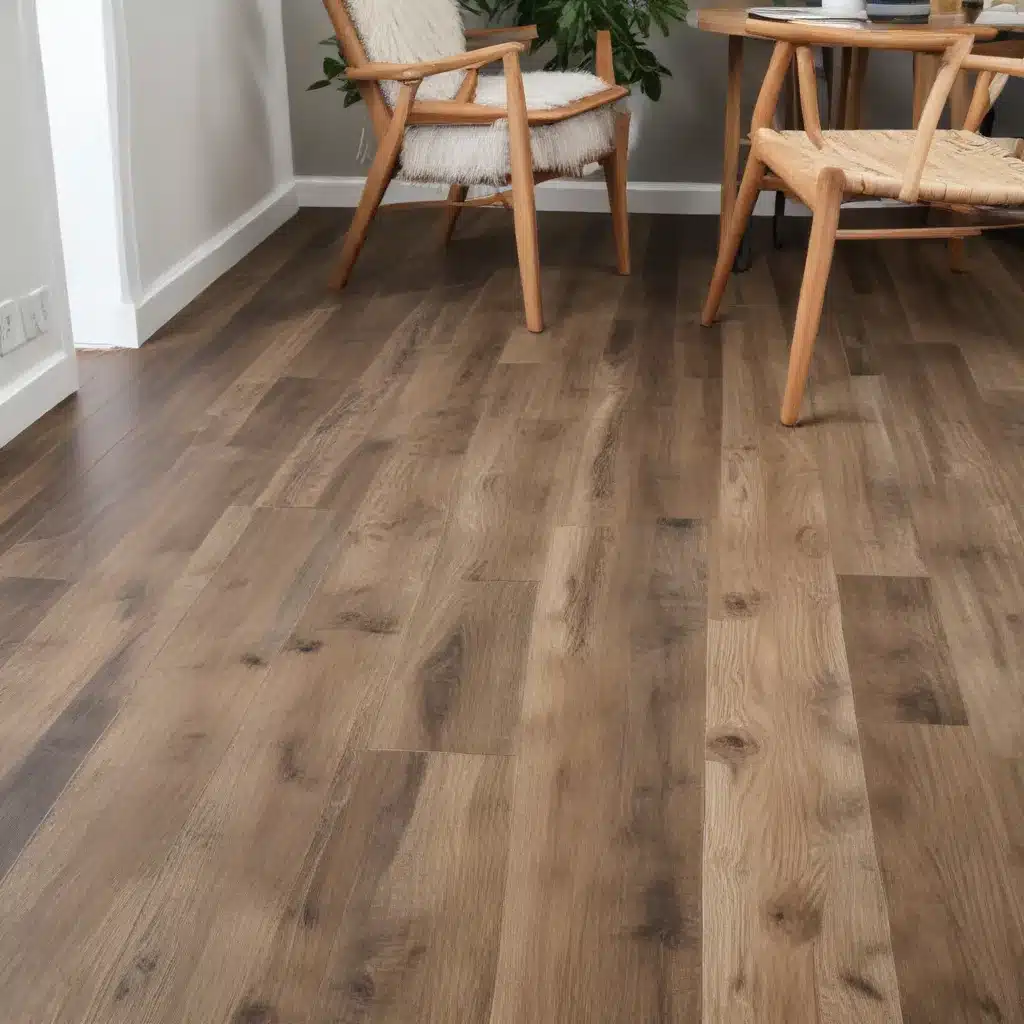
As an experienced home improvement consultant, I’ve had the pleasure of guiding countless clients through the exciting yet often overwhelming process of renovating their living spaces. One crucial aspect that frequently takes center stage is the selection of flooring – a decision that not only sets the aesthetic tone but also has a significant impact on the overall sustainability and long-term performance of your home.
In today’s eco-conscious climate, homeowners are increasingly focused on making responsible choices that minimize their environmental footprint. Whether you’re planning a full-scale remodel or simply looking to refresh a room, exploring sustainable flooring options can be a game-changer in your renovation journey.
Natural Hardwood Flooring
One of the most enduring and beloved flooring choices is natural hardwood. Sourced from responsibly managed forests, hardwood floors offer a timeless beauty that can seamlessly blend with a variety of design styles. Species such as oak, maple, and hickory are not only visually stunning but also incredibly durable, with the potential to last for decades.
When selecting sustainable hardwood, look for options certified by organizations like the Forest Stewardship Council (FSC) or the Sustainable Forestry Initiative (SFI). These certifications ensure that the wood is harvested in an environmentally responsible manner, promoting healthy forest ecosystems and supporting local economies.
Bamboo Flooring
An ever-popular alternative to traditional hardwood is bamboo flooring. Bamboo, a fast-growing grass, is often celebrated for its eco-friendly credentials. Unlike trees, which can take decades to mature, bamboo can be harvested in as little as three to five years, making it a highly renewable resource. Additionally, bamboo floors are known for their exceptional hardness and stability, rivaling or even surpassing the performance of many hardwood species.
When sourcing bamboo, be mindful of the manufacturing process and opt for options that use low-VOC adhesives and finishes. This ensures that your new floors not only look beautiful but also contribute to a healthier indoor air quality.
Cork Flooring
Another sustainable flooring option that is gaining traction is cork. Harvested from the bark of cork oak trees, this material is renewable, biodegradable, and naturally hypoallergenic. Cork floors are renowned for their cushioned feel, noise-dampening properties, and thermal insulation capabilities, making them a practical and eco-friendly choice for a variety of spaces.
The cork industry also has a strong focus on sustainable practices, with a commitment to preserving the delicate cork oak forests and supporting the local communities that rely on this valuable resource.
Eco-Friendly Flooring Alternatives
While natural materials like hardwood, bamboo, and cork are excellent sustainable choices, there are also several eco-friendly flooring alternatives worth considering.
Reclaimed Wood Flooring
Salvaging wood from old barns, factories, or other structures not only gives new life to a material but also reduces the demand for virgin timber. Reclaimed wood flooring often boasts unique character and patina, adding a touch of rustic charm to any space.
Recycled Tire Flooring
Innovative manufacturers have found a way to transform discarded tires into durable, vibrant, and eco-friendly flooring options. These recycled rubber floors are not only visually striking but also offer excellent shock absorption and noise-dampening properties.
Renewable Linoleum
Made from natural linseed oil, cork, and other renewable materials, linoleum is a classic flooring choice that has experienced a resurgence in popularity. This resilient, low-maintenance option is known for its long lifespan and can be a great fit for high-traffic areas.
Sustainable Installation Practices
Selecting sustainable flooring materials is only half the battle; the way they are installed can also have a significant impact on the environment. When undertaking your renovation, consider the following sustainable installation practices:
Minimizing Construction Waste
Work closely with your flooring contractor to develop a waste-reduction plan, ensuring that any leftover materials are properly recycled or repurposed rather than ending up in landfills.
Efficient Subfloor Preparation
Properly preparing the subfloor can help minimize the need for excessive materials and reduce the overall environmental impact of the installation process.
Green Adhesives and Sealants
Opt for low-VOC or VOC-free adhesives, sealants, and finishes to safeguard indoor air quality and minimize the release of harmful chemicals into the environment.
Environmental Considerations
When exploring sustainable flooring options, it’s essential to consider the broader environmental impact of your choices. factors such as indoor air quality, renewable resource management, and lifecycle environmental impact should all play a role in your decision-making process.
Indoor Air Quality: Certain flooring materials can release volatile organic compounds (VOCs) or other potentially harmful substances, which can negatively impact the air quality in your home. Prioritize options that are certified as low-emitting or, ideally, VOC-free.
Renewable Resource Management: Look for materials that are harvested or manufactured in a way that promotes the long-term sustainability of the resource. This could include certifications like FSC or SFI for hardwood, or understanding the replanting and regeneration practices of bamboo or cork producers.
Lifecycle Environmental Impact: Consider the full life cycle of the flooring, from its production and installation to its eventual disposal or recycling. Opt for materials with a lower carbon footprint and that can be easily repurposed or responsibly disposed of at the end of their useful life.
By carefully weighing these environmental considerations, you can make informed choices that align with your sustainable renovation goals and contribute to a healthier, more eco-conscious living space.
Whether you’re drawn to the timeless charm of natural hardwood, the renewable appeal of bamboo, or the resilience of cork and other innovative options, the world of sustainable flooring offers a wealth of opportunities to transform your home while minimizing your environmental impact.
As you embark on your renovation journey, I encourage you to explore the wealth of sustainable flooring options available and work closely with reputable contractors who share your commitment to eco-friendly practices. Your home and the planet will thank you for it.
For more inspirational ideas and practical tips for your sustainable renovation, be sure to visit Reluctant Renovator – your go-to resource for budget-friendly projects, family-friendly designs, and time-saving hacks.



